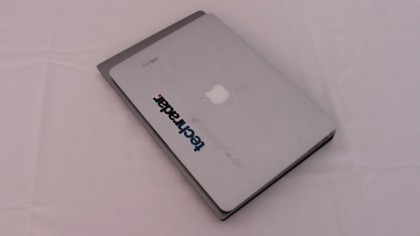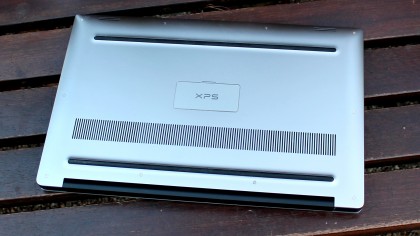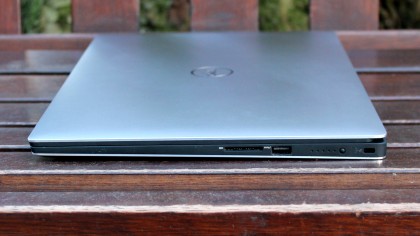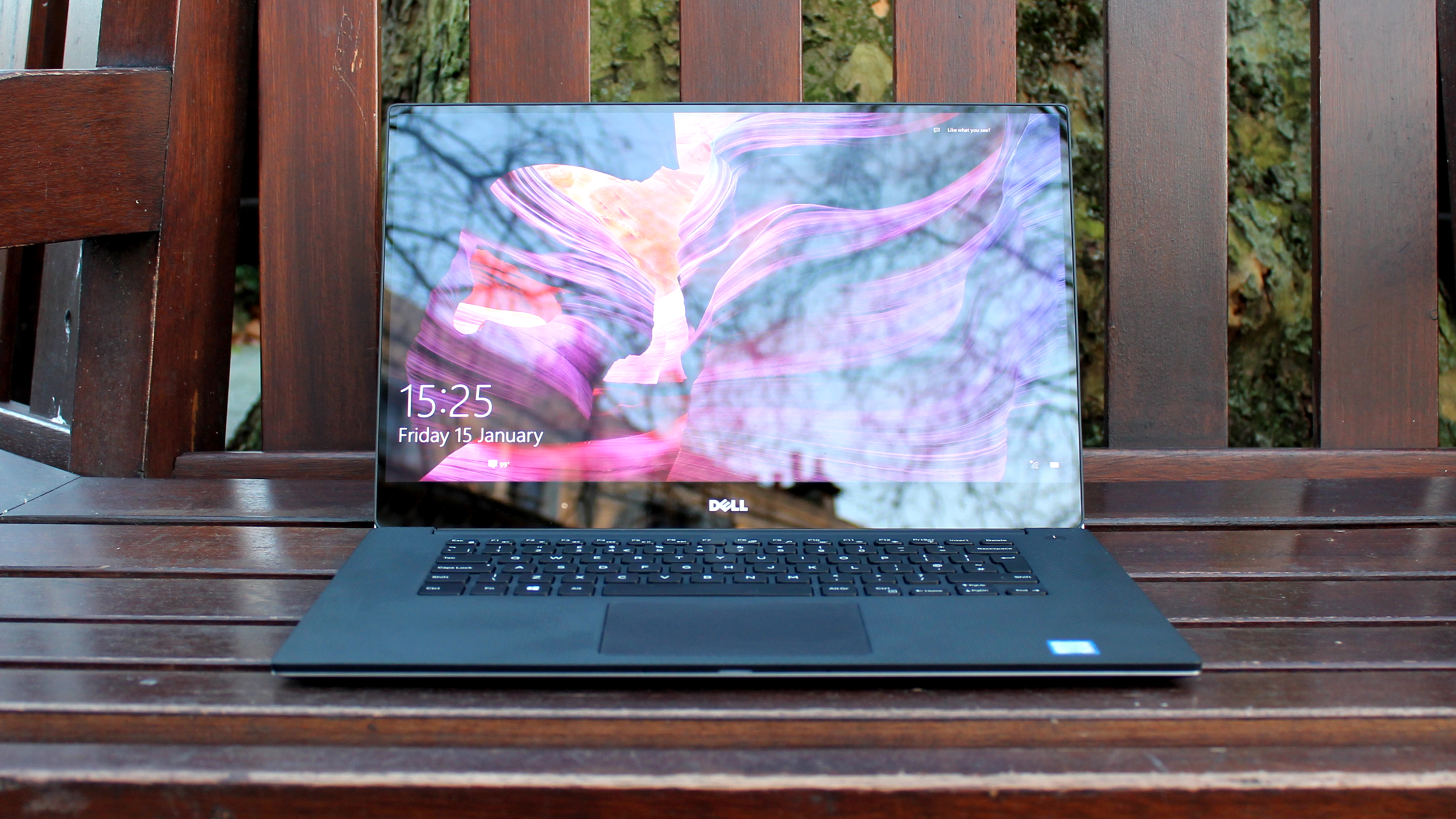Why you can trust TechRadar
The XPS 15 might be more compact than other 15-inch laptops, but it's equally as weighty as some of them. Weighing 4.58 pounds (2kg) for the 4K version, it's a pound (0.4kg) heavier than both the 15-inch MacBook Pro with Retina and the Surface Book. The 15-inch Asus UX501, on the other hand, is half a pound (0.2kg) heavier.
While it's worth noting that the 1080p version of the XPS 15 weighs a more palatable 3.9 pounds (1.8kg), the Dell's forward-thinking design and its grippable materials mean that the extra weight shouldn't be a deciding factor in your choice. If it's too heavy for you, you're probably better off with a 13-inch laptop.
It wasn't difficult to understand why Dell made the XPS 13 with an InfinityEdge display before the XPS 15. Small laptops never go out of fashion – you only have to look at the 12-inch MacBook for evidence of that.

However, I couldn't help but think that the 15-inch laptop segment was in greater need of a laptop built with a compact chassis. As the specs show, the XPS 15 has the smallest footprint of them all.
The 15-inch MacBook Pro with Retina puts up an admirable fight, and is only marginally less compact than the XPS 15, measuring 35.89 x 24.71 x 1.8cm, or 14.1 x 9.72 x 0.7 inches (W x D x H) versus the 35.7 x 23.5 x 1.7cm, or 14 x 9.2 x 0.7 inches of Dell's machine. The UX501 is a comparable bloater and more typical of 15-inch laptops, measuring 38.3 x 25.3 x 3.23cm, or 15 x 10 x 1.2 inches.
While narrower than the MacBook and XPS 15, the 13-inch Surface Book is equally as long due to its 3:2 aspect ratio display. It's also taller due to its convertible design, measuring 32.2 x 23.2 x 2.3cm, or 12.7 x 9.1 x 0.9 inches.

Spec sheet
- CPU: 2.6GHz Intel Core i7 6700HQ (quad-core, 6MB cache, up to 3.5GHz with Turbo Boost)
- Graphics: Nvidia GeForce GTX 960M (with 2GB GDDR5)
- RAM: 16GB Dual Channel DDR4 (2,133MHz; (8GBx2)
- Screen: 15.6-inch, 4K Ultra HD (3,840 x 2,160) InfinityEdge touch
- Storage: 512GB PCIe SSDSolid State Drive
- Ports: HDMI, USB 3.0 (x2) with PowerShare; Headset Jack (1); SD card reader (SD, SDHC, SDXC); Kensington Lock slot; Thunderbolt 3(1)
- Connectivity: DW1820 3x3 802.11ac 2.4/5GHz + Bluetooth 4.1
- Camera: Widescreen HD (720p) webcam with dual array digital microphone
- Weight: 4.4 poundslbs
- Size: 35.7 x 23.5 x 1.7cm (W x D x H)
Dell usually aims to get everybody into the party when it comes to its consumer-focused line of XPS devices, and the XPS 15 is no different. The lowest of the four configurations comes with a 1TB spinning hard drive, 8GB of RAM and a 1080p display for £1,099 (US$999.99, or AU$1,410), undercutting its main rival, Apple's 15-inch MacBook Pro with Retina, by £500 (US$500, or AU$706).
Maxing the XPS 15 out fetches you a 512GB SSD, 16GB of RAM and a 4K display for £1,889 ($1,779.99, or AU$2,512). That's just £100 ($120, or AU$169) less than Apple's similarly-specced machine, and it makes for a much fairer fight.

Of course, the gulf in cost between the top and bottom configurations will have an impact on the overall experience. The entry-level XPS 15 is slower, but the larger capacity hard disk and 1080p display arguably make it a better fit for gamers, who will spend less time on the desktop. If you're more concerned with editing high-resolution videos, streaming 4K video and working with text documents and spreadsheets, in addition to gaming, only the 4K version should be considered.
All configurations feature the same healthy selection of ports, including two USB 3.0 ports and a USB-C Thunderbolt 3 port, which allows you to take advantage of USB-C peripherals – from power banks to monitors and even external graphics card enclosures, such as the Razer Core. Touted as the "one port to rule them all," USB-C holds massive promise but is currently limited by the number of supported peripherals out there.
Current page: Specifications and value
Prev Page Introduction and design Next Page Performance and benchmarks
